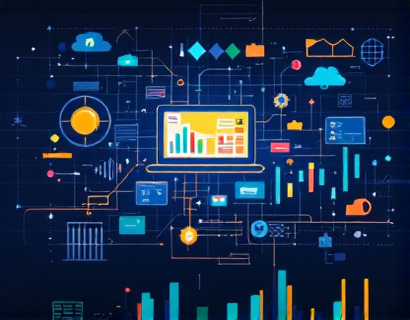Unlocking the Cosmos: Interactive Software for Astronomy Education and Exploration
In an era where technology and education intersect, the field of astronomy has witnessed a revolutionary transformation. Interactive software has emerged as a powerful tool, making the vast and intricate universe accessible to a broader audience. This article delves into the capabilities and benefits of such software, designed to transform astronomy education and exploration. For astronomy enthusiasts, educators, students, and space exploration hobbyists, these tools bridge the gap between complex celestial concepts and engaging, hands-on learning experiences.
The primary goal of this innovative software is to foster a deeper understanding of the universe, galaxy, and celestial objects. By leveraging advanced graphics, real-time data, and interactive simulations, users can embark on an extraordinary cosmic journey from the comfort of their homes. The software is meticulously crafted to cater to diverse learning styles and levels of expertise, ensuring that everyone from beginners to seasoned astronomers can find value in its resources.
Immersive Learning Experiences
One of the most significant advantages of interactive astronomy software is its ability to create immersive learning environments. Traditional textbooks and lectures often struggle to convey the dynamic and three-dimensional nature of the cosmos. Interactive software, however, uses 3D models and virtual reality (VR) to simulate celestial phenomena, allowing users to explore planets, stars, galaxies, and other cosmic structures in a highly engaging manner. This immersive approach not only enhances understanding but also sparks curiosity and a sense of wonder.
For instance, users can virtually travel through the solar system, observing the intricate details of each planet's surface and atmosphere. They can witness the majestic dance of galaxies, the birth and death of stars, and the mysterious phenomena of black holes. These experiences are not just visually stunning but also scientifically accurate, providing a reliable and enriching educational tool.
Engaging Resources and Comprehensive Tools
Beyond immersive experiences, the software offers a wealth of engaging resources and comprehensive tools. These include interactive maps of the night sky, detailed catalogs of celestial objects, and real-time data from space telescopes and observatories. Users can access up-to-date information on astronomical events, such as eclipses, meteor showers, and planetary alignments, ensuring they never miss a celestial occurrence.
Educators can utilize these resources to create dynamic lesson plans that cater to various learning objectives. The software includes lesson plans, quizzes, and interactive assignments that make teaching astronomy both enjoyable and effective. Students can engage with the material in a hands-on manner, conducting virtual experiments and simulations that reinforce their understanding of key concepts.
Bridging Complex Concepts with Engaging Education
A significant challenge in astronomy education is making complex concepts accessible and understandable. Interactive software addresses this by breaking down intricate ideas into digestible and interactive modules. For example, the software can explain the principles of gravity, the mechanics of planetary motion, and the processes of star formation through interactive simulations and visual aids.
These modules often incorporate gamification elements, such as challenges and rewards, to motivate users and enhance their learning experience. By making the learning process fun and interactive, the software helps maintain user engagement and encourages deeper exploration of the subject matter.
Fostering Curiosity and Lifelong Learning
Perhaps the most profound impact of interactive astronomy software is its ability to foster a lifelong passion for learning and exploration. By igniting curiosity and providing tools for self-discovery, the software encourages users to continue exploring the cosmos long after their initial foray into astronomy. This is particularly important in a world where scientific literacy is more crucial than ever.
For astronomy enthusiasts, the software serves as a gateway to more advanced topics and research areas. It provides access to professional-grade tools and data, enabling amateur astronomers to contribute to real scientific research. This democratization of astronomy empowers individuals to make meaningful contributions to the field, regardless of their background or expertise.
Supporting Diverse Learning Styles
Interactive software is designed to cater to a wide range of learning styles, ensuring that all users can benefit from the educational content. Visual learners can appreciate the detailed graphics and simulations, while kinesthetic learners can engage in virtual experiments and hands-on activities. Auditory learners can access audio explanations and guided tours, and reading-oriented learners can delve into comprehensive texts and articles.
This multi-modal approach ensures that the software is inclusive and effective for a diverse user base. Whether a user prefers to learn through visual, auditory, or kinesthetic means, the software adapts to their needs, providing a personalized learning experience.
Real-Time Data and Current Research
One of the most compelling features of interactive astronomy software is its integration with real-time data from cutting-edge telescopes and observatories. Users can access live feeds from space missions, such as the Hubble Space Telescope or the Mars rovers, and view the latest discoveries as they happen. This connection to current research not only makes the learning experience more relevant but also highlights the dynamic and ever-evolving nature of astronomy.
For students and educators, this real-time data can be invaluable for research projects and classroom discussions. It provides a direct link to the frontiers of scientific knowledge, allowing users to explore the latest findings and contribute to ongoing scientific dialogues. This feature also helps demystify the scientific process, showing users how new discoveries are made and how they impact our understanding of the universe.
Community and Collaboration
Interactive astronomy software often includes features that foster a sense of community and collaboration among users. Online forums, discussion boards, and social media integrations allow users to share their discoveries, ask questions, and collaborate on projects. This community aspect is particularly beneficial for students and amateur astronomers who can learn from each other and form lasting connections.
Educators can also leverage these community features to create collaborative learning environments. Students can work together on group projects, share resources, and provide peer feedback, enhancing the overall educational experience. This collaborative approach not only enriches the learning process but also builds a supportive and engaged community of astronomy enthusiasts.
Accessibility and Affordability
Another significant advantage of interactive astronomy software is its accessibility and affordability. Unlike traditional observatories and telescopes, which require substantial financial investment and physical access, this software can be used from anywhere with an internet connection. This democratizes access to astronomy education, making it available to people from all walks of life, regardless of their geographical location or economic status.
Many of these software solutions are offered at a low cost or even for free, ensuring that the wonders of the cosmos are within reach of everyone. This accessibility is crucial for promoting scientific literacy and inspiring the next generation of scientists, engineers, and explorers.
Conclusion
Interactive software for astronomy education and exploration represents a significant leap forward in making the universe accessible and understandable. By combining immersive learning experiences, engaging resources, and comprehensive tools, this software transforms the way we learn about and explore the cosmos. For astronomy enthusiasts, educators, students, and space exploration hobbyists, these tools open up a world of possibilities, fostering a deeper understanding and igniting a lifelong passion for the stars.
As technology continues to advance, the potential for interactive astronomy software will only grow. The future holds even more sophisticated simulations, deeper integration with real-time data, and more innovative ways to engage users. The journey through the cosmos has never been more exciting, and with the right tools, anyone can become an explorer of the universe.










































